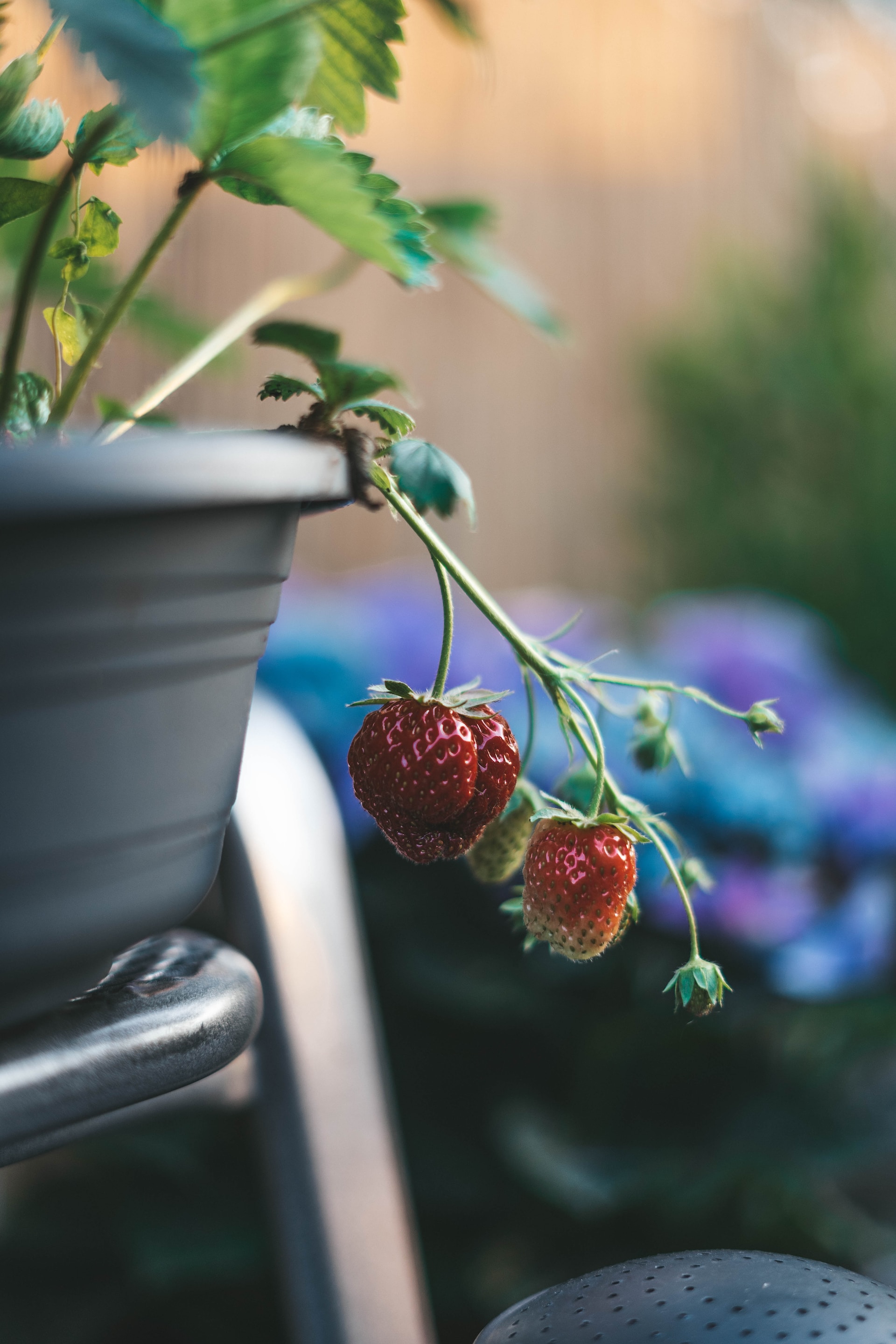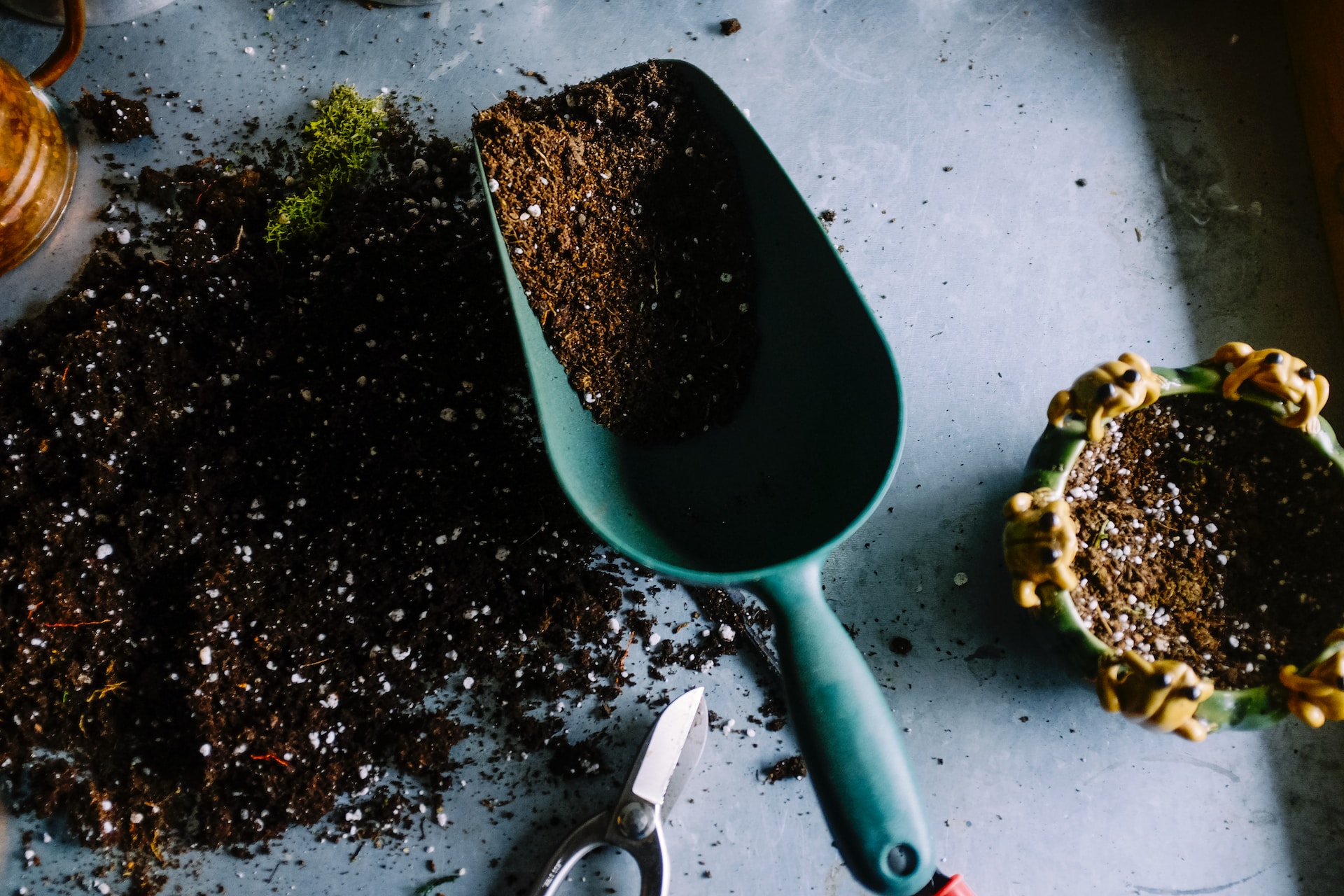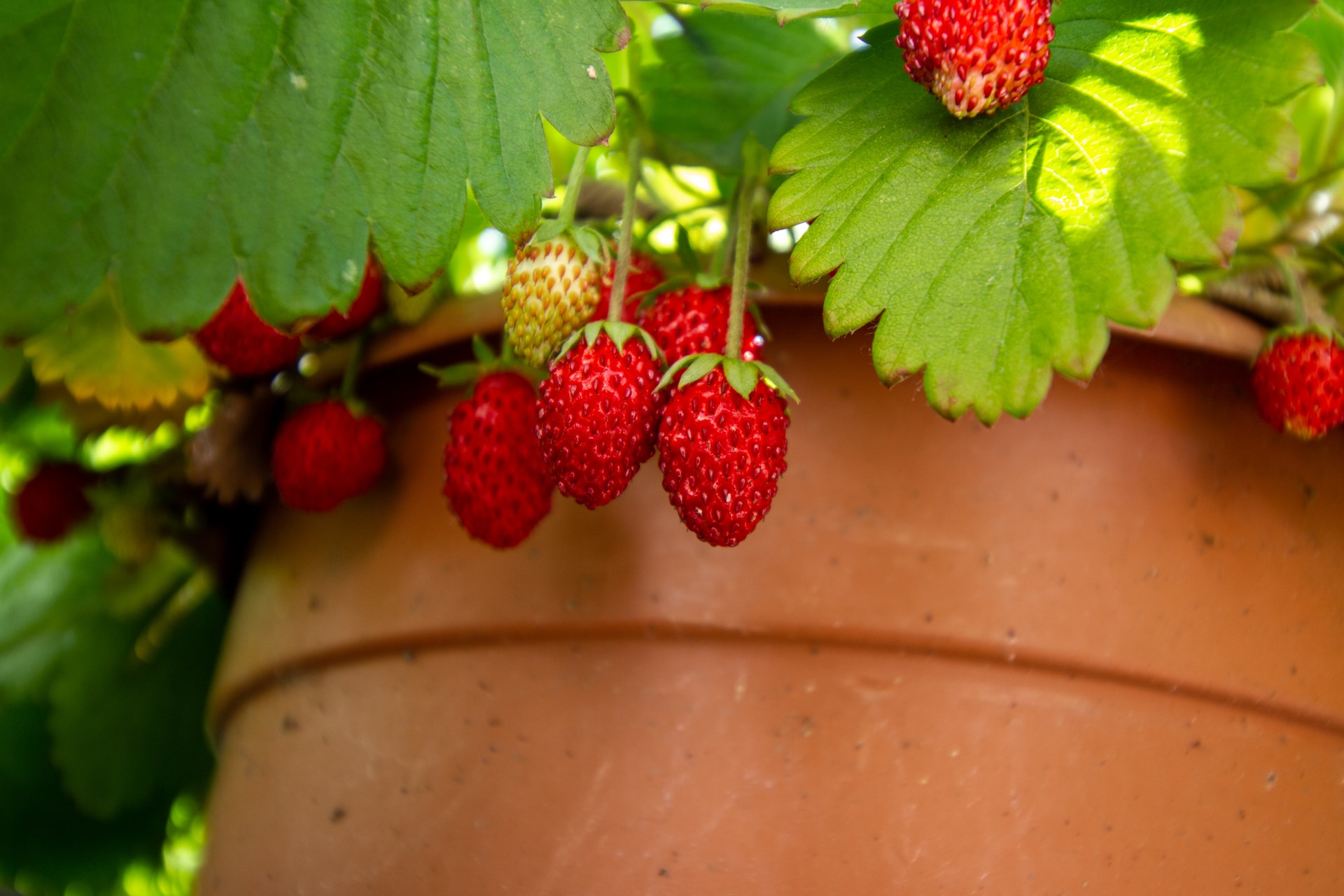It has been a long, cold, and dreary Spring here in the garden and we are so very ready for some sun! And I don’t think any plant better symbolizes Summer sun than the humble strawberry. So let me show you exactly how to plant strawberries into containers for years of delicious homegrown berries.
In this article, we’ll cover everything from the soil that is optimal for strawberries, container types that keep them healthy, to feeding and watering strawberry plants for the biggest harvests.
Selecting a Strawberry Container (Pot)

Strawberries are slightly odd perennial plants in that they do not have a deep root system, but instead grow shallow roots that spread out closer to the surface. Which means that while you can use my favorite kind of container, the 5-10 gallon fabric bag or smart pot, you would be wasting a lot of soil since the roots will only take up half the pot. This is fine and will work, but to optimize your space and soil I recommend opting for a shallower container.
A traditional stacking container is a great option that we typically use and it makes for a fun strawberry tower once your plants grow in a bit. Call me basic if you must, but I love how these turn out!
A deeper, more standard container is certainly not going to hurt the plant either if you prefer to reuse a pot you already own.
In terms of soil preferences, strawberries remind me of raspberries in that you have to strike a delicate balance. If you let them dry out, they are going to die very quickly. But they’re very susceptible to root rot from overly wet conditions too.
Which is why I do not recommend you use a terracotta pot because they simply don’t hold on to water very well. A better option is something made out of plastic as plastic holds on to the water for much longer (or glazed terra cotta if you want to avoid plastic).
To make sure that water is never pooling at the bottom of the container, double-check that your container has plenty of drainage holes. If it doesn’t, punch 3-4 holes into the bottom to fix that.
Container Strawberry Soil

For the potting soil mix, I typically opt for a very cheap bag from the store to save money and then add some vermiculite to improve moisture and nutrient retention. That combination does a nice job for strawberries (it works great for raspberries as well!) without costing as much as a premium bagged mix.
Another simple, effective DIY recipe is the classic:
- 2 parts sphagnum peat moss
- 2 parts compost
- 1 part perlite
- 3 scoops vermiculite
This will strike a good balance of moisture retention and drainage without all the cost of a premium potting mix.
Fertilizer (plant food) unfortunately is a bit of a trickier topic. Unfortunately, it seems like every strawberry growing resource out there has a dramatically different view on the topic!
In cases like that where opinions are mixed, I try to rely on my personal experience and the most trusted experts out there like the Cal Ag UC Davis site, which has a good resource on feeding strawberries.
My interpretation of their notes is that it’s a good idea to add some fertilizer at the pre-planting stage. In practical terms, this means you should add fertilizer to the potting mix before you plant the strawberries.
For my berries, I mix in a standard low-Nitrogen vegetable fertilizer at a rate of about ⅓ cup for every three strawberry plants.
We choose to grow primarily ever-bearing strawberry varieties, which means that they bear fruit multiple times throughout the entire growing season and expend a lot of nutrients doing so. Thus, every one to two months, we side-dress our plants with a little extra fertilizer to keep them producing heavily. I recommend you do the same!
If you’re wondering whether you should purchase a berry-specific fertilizer instead of a generic option, it is not necessary. The berry-specific fertilizers will have more N and less P and more of an acidification element. That is great for planting something like blueberries, but strawberries like less acidification and the fertilizer we added in is moderately acidic already.
Before you move on, be sure to thoroughly mix and water in all the ingredients.
Planting in Bare Root Strawberry Plants
For the planting step, you may want to follow along with our strawberry planting video. If not, full instructions are below!
Once your container and soil is all ready to go, gently prepare a planting hole for each of your bare root strawberry plants to go into.
But before you actually stick them into the soil, take a moment to examine the structure of the plant. You should be able to clearly identify the root system, the crown (where the stems grow out of), the petioles, and the leaves.
We want the soil line to land right above the root system, but not cover the top of the crown. A lot of strawberry guides are very careful about getting the soil line just perfect and warn that the plant will not grow if that soil line is not at the exact place at the crown. But honestly, as long as you don’t cover the top of the crown… your plant will be just fine.
Once you feel familiar with the plant’s structure, it’s time to stick the root system in your premade planting hole in the soil. Use your hands to gently press them in and make sure the roots have good contact with the soil to avoid air pockets.
Mulch Generously

The last (but critical!) step is to add mulch around the crowns of your plants. The shallower strawberry tower style containers in particular will dry out far too fast in the summer, and we’ll lose much less moisture through evaporation by mulching the soil generously. So add mulch all around the plants and don’t skimp =).
Place Strawberry Containers in Full Sun

Your strawberries are going to do best in full sun. Probably.
The exception is if you live somewhere with very hot summers and you’re growing a popular everbearing variety originating in a cooler climate (like me). In that case, go ahead and start your plants in full sun and move them to an area that gets a little bit of afternoon shade during the full brunt of summer. Otherwise, if you’re growing a variety more suited to your climate, simply leave them in the full sun.
And that is it for strawberry planting! Compared to blueberries, they are so simple, right? Just remember to keep your strawberry plants moist, add extra fertilizer every 6-8 weeks, and you should be eating strawberries this same year!
So make sure you have your strawberry crumble and bruschetta recipes ready to go.
Happy Gardening!
